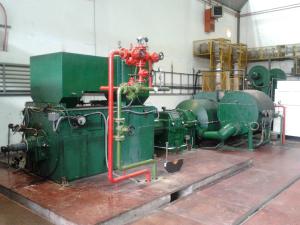CODAC control system celebrates first plasma
As with so many good things in life, the cooperation between the two projects came about by coincidence. During a meeting held in Aix-en-Provence in May 2010, the ITER CODAC team had presented its EPICS project, as well as the first hardware standards to be used in ITER plant control. It soon became apparent that these hardware standards were the same used by the control and data acquisition group in Frascati to upgrade the slow control of one of their major facilities, the Motor Flywheel Generator 1.
The Motor Flywheel Generator 1 is a motor flywheel generator powering the FTU's 8T toroidal magnet. To give a rough idea of the size of this plant, the plasma current induced by MFG1 is approximately 38 kA, equivalent to the current flowing in about 38,000 apartments. Its control logic can be reasonably isolated from FTU's supervising control system, making the Flywheel Generator the ideal candidate for this kind of test.



